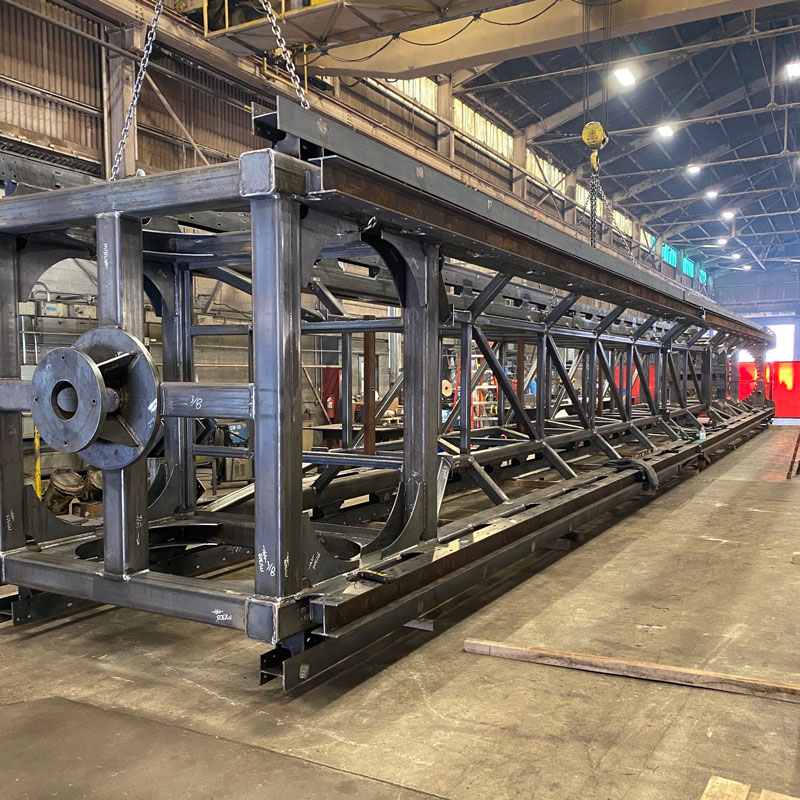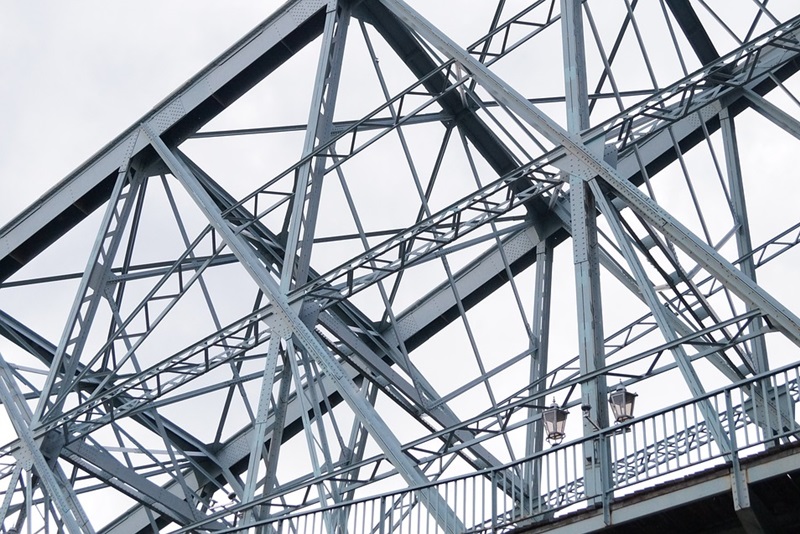Metal Fabrication Melbourne: Precision Engineering for All Needs
Metal Fabrication Melbourne: Precision Engineering for All Needs
Blog Article
Comprehensive Evaluation of Cutting-Edge Techniques in Steel Fabrication Market
As the steel construction sector proceeds to evolve, the assimilation of innovative techniques has become vital for staying competitive and meeting the demands of modern manufacturing requirements. From laser reducing improvements to the application of robotics and 3D printing in steel manufacturing, the landscape of fabrication strategies is rapidly altering. With each advancement bringing its very own set of advantages and obstacles, an extensive analysis of these methods is vital for firms aiming to simplify their processes, boost precision, and ultimately, raise the top quality of their steel manufacture result. In this vibrant market where innovation plays a pivotal role, recognizing the subtleties of these advanced methods is not simply an option yet a necessity for those looking to advance in the ever-evolving globe of steel construction.
Laser Reducing Innovations
In the realm of steel fabrication, laser cutting developments have actually revolutionized the precision and effectiveness of metal shaping procedures. By taking advantage of the power of focused laser light beams, suppliers can currently achieve exceptional levels of precision when cutting with various kinds of steels. This technology makes it possible for intricate designs to be executed with minimal product waste, making it an economical remedy for sectors calling for high precision parts.
One of the key benefits of laser cutting is its ability to manage a large range of materials, consisting of stainless-steel, aluminum, and carbon steel, easily. The procedure produces tidy, burr-free sides, getting rid of the requirement for additional ending up steps. The non-contact nature of laser reducing decreases the danger of material contamination, resulting in greater quality end products.
In addition, laser reducing equipments can be set to make swift, specific cuts, considerably reducing manufacturing time contrasted to conventional reducing techniques. This rate and accuracy make laser cutting especially suitable for automation settings where performance is critical. As innovation remains to advance, laser cutting is poised to play an increasingly vital role in the steel manufacture market.

CNC Machining Innovations
The advancement of CNC machining innovations has introduced a brand-new era of precision and performance in the steel fabrication sector. Computer System Numerical Control (CNC) equipments have actually changed steel manufacture by using unrivaled precision and repeatability in the manufacturing procedure. steel fabricators melbourne. One of the essential technologies in CNC machining is the integration of sophisticated software program systems that make it possible for real-time surveillance and changes, leading to enhanced productivity and top quality control
In addition, the advancement of multi-axis CNC devices has actually permitted the fabrication of intricate steel elements with complex layouts that were formerly testing to produce. These machines can execute a wide variety of machining operations, consisting of milling, boring, turning, and grinding, all with high levels of precision.
Moreover, the consolidation of automation and robotics in CNC machining has structured production procedures, decreased lead times, and reduced the margin of error. This assimilation of cutting-edge modern technologies not only increases effectiveness yet also makes certain consistent top quality throughout all made steel components. In final thought, CNC machining innovations remain to drive developments in the steel fabrication industry, setting new requirements for precision and efficiency.
Automated Welding Technologies
Automated welding modern technologies have actually reinvented the steel construction industry, enhancing performance and accuracy in the welding procedure. These cutting-edge modern technologies make use of computer-controlled systems to automate the welding procedure, resulting in greater productivity levels and boosted weld quality. One of the essential benefits of automated welding is the capability to execute intricate welds with consistent precision, decreasing the likelihood of errors and remodel.
Robotic welding systems go to the forefront of automated welding modern technologies, using unparalleled speed and check out this site accuracy. These systems see this site can handle a large variety of welding tasks, from basic to detailed, easily (Alpha reo). By using innovative sensing units and software application, robot welders can adapt to variations in product and joint geometry, ensuring an uniform and dependable weld
Moreover, automated welding technologies boost workplace security by minimizing the direct exposure of human welders to hazardous fumes and intense warm. As the steel manufacture market continues to advance, including automated welding modern technologies will certainly be vital for companies wanting to remain competitive and fulfill the expanding demands for premium bonded products.
Robotics Assimilation in Manufacture
Making use of robotic systems in construction procedures has become an essential method for improving efficiency and precision in modern-day production settings. Robotics combination in steel construction offers a myriad of benefits, including raised performance, enhanced quality assurance, and improved safety measures. These advanced robotic systems are outfitted with sophisticated sensing units and shows capabilities, permitting them to carry out elaborate tasks with a high degree of precision and repeatability.
One of the crucial advantages of robotics assimilation in steel fabrication is the capacity to automate repeated tasks, such as material handling, cutting, welding, and setting up processes. This not only accelerates production cycles yet likewise reduces the risk of human error, bring about higher overall item quality. In addition, robots can run 24/7, substantially increasing manufacturing output and conference tight project deadlines.

3D Printing in Steel Manufacturing
Having actually transformed the steel fabrication market with robotics integration, the growing exploration of 3D printing in steel production is positioned to additional advance the realm of contemporary production techniques. 3D printing, likewise called additive production, offers unmatched style liberty and intricacy, making it possible for the creation of complex steel frameworks that were formerly unattainable via typical production methods. By using computer-aided design you could check here (CAD) software application, makers can exactly manage the layer-by-layer deposition of steel product, leading to get rid of enhanced geometries and performances.
One of the essential advantages of 3D printing in steel manufacturing is its ability to reduce product waste significantly. Unlike subtractive manufacturing procedures where excess product is cut away, 3D printing just utilizes the required amount of steel required for the last component. This effectiveness not only leads to set you back financial savings yet likewise lines up with sustainable production techniques by lessening ecological influence.
In addition, 3D printing makes it possible for fast prototyping and customization, enabling the manufacturing of tiny sets of intricate steel parts with short preparations. As the technology continues to mature and become more obtainable, its combination into mainstream steel fabrication procedures is anticipated to drive innovation and efficiency across the sector.
Conclusion
To conclude, the steel construction sector has seen substantial advancements in strategies such as laser cutting, CNC machining, automated welding, robotics integration, and 3D printing. These advanced innovations have actually changed the means steel items are manufactured, causing increased cost-effectiveness, efficiency, and precision. Continued financial investment in these ingenious techniques is critical for the industry to stay affordable and fulfill the demands of contemporary manufacturing processes.
As the steel fabrication market continues to progress, the combination of advanced techniques has actually come to be necessary for staying affordable and fulfilling the demands of modern production criteria.One of the essential advantages of laser cutting is its capacity to manage a broad range of products, consisting of stainless steel, light weight aluminum, and carbon steel, with simplicity.Automated welding technologies have actually reinvented the steel fabrication sector, improving efficiency and accuracy in the welding process.Having actually reinvented the steel fabrication market through robotics assimilation, the expanding exploration of 3D printing in steel manufacturing is positioned to further advancement the realm of modern-day production methods.In final thought, the steel construction industry has seen significant improvements in techniques such as laser cutting, CNC machining, automated welding, robotics combination, and 3D printing.
Report this page